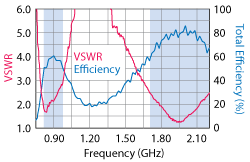
Figure 9 The CUBE mXTEND™ antenna booster from Fractus Antennas (5 mm3).
At EDI CON USA 2016, Dr. Nathan Cohen of Fractal Antenna gave a session and demonstration of their unique RF/microwave cloaking and deflection technology using fractal structures. Over a broad band, 2.5 to 3 GHz, he created a Waldo (window around a wall) that channeled the RF energy around a barrier (the “wall”) using an array of closely packed fractal-shaped resonators that was wrapped around the barrier, creating a “window.” The bandwidth is an impressive 500 percent for front scatter and 100 percent for backscatter with about 1 dB insertion loss.7
Fractus Antennas was featured in the October 2017 issue of Microwave Journal and has a new “antenna-less technology” that is based on replacing a complex and usually customized antenna design with an off-the-shelf, standardized, miniature component called an antenna booster.8 Being a surface-mount, chip-like device, the antenna booster can be picked and placed like other surface-mount components onto a PCB for low cost assembly (see Figure 9). Aimed at mobile devices and IoT applications, it is made with metalized ceramic layers that use fractal shapes designed to meet different design requirements.
Miniature chip antennas are not new, so what is unique here is the multiband capability with a single device. While conventional miniature chip antennas were based on high-permittivity ceramics and delivered good performance for narrowband, single frequency applications, these new boosters can deliver full mobile performance within a broad range of frequency bands (e.g., 698 to 2690 MHz) with a single device. The integration requires a matching circuit that allows the device to operate at the desired bands of interest. Based on conventional low-cost materials and assembly processes, the boosters can be made in high volume at very low cost.

Figure 10 VSWR and efficiency for 5 band mobile antenna from Fractus Antenna.
An example booster is 5 mm3 in size and operates from 824 to 960 MHz and 1710 to 2170 MHz simultaneously. With a matching network on the PCB, a VSWR ≤ 3:1 across the operating bands and an average total efficiency of 56.7 and 75.8 percent in the 824 to 960 MHz and 1710 to 2170 MHz frequency regions, respectively, is achieved (see Figure 10).8
Other Unique Technologies
Plasma Antennas (PSiAn) offers a range of innovative plasma-silicon devices (PSiD) to form the compact RF core of future smart antennas. The PSiDs provide fast, electronic beamforming and beam selection functions. A PSiD can be regarded as a multi-port, wideband switch that replaces RF switches, phase shifters and attenuators with one compact, low loss device. Due to their silicon IC construction, PSiDs can be reproduced with high precision for the mass market at low cost. They have high power handling and, unlike RF MEMS, can be “hot” switched.

